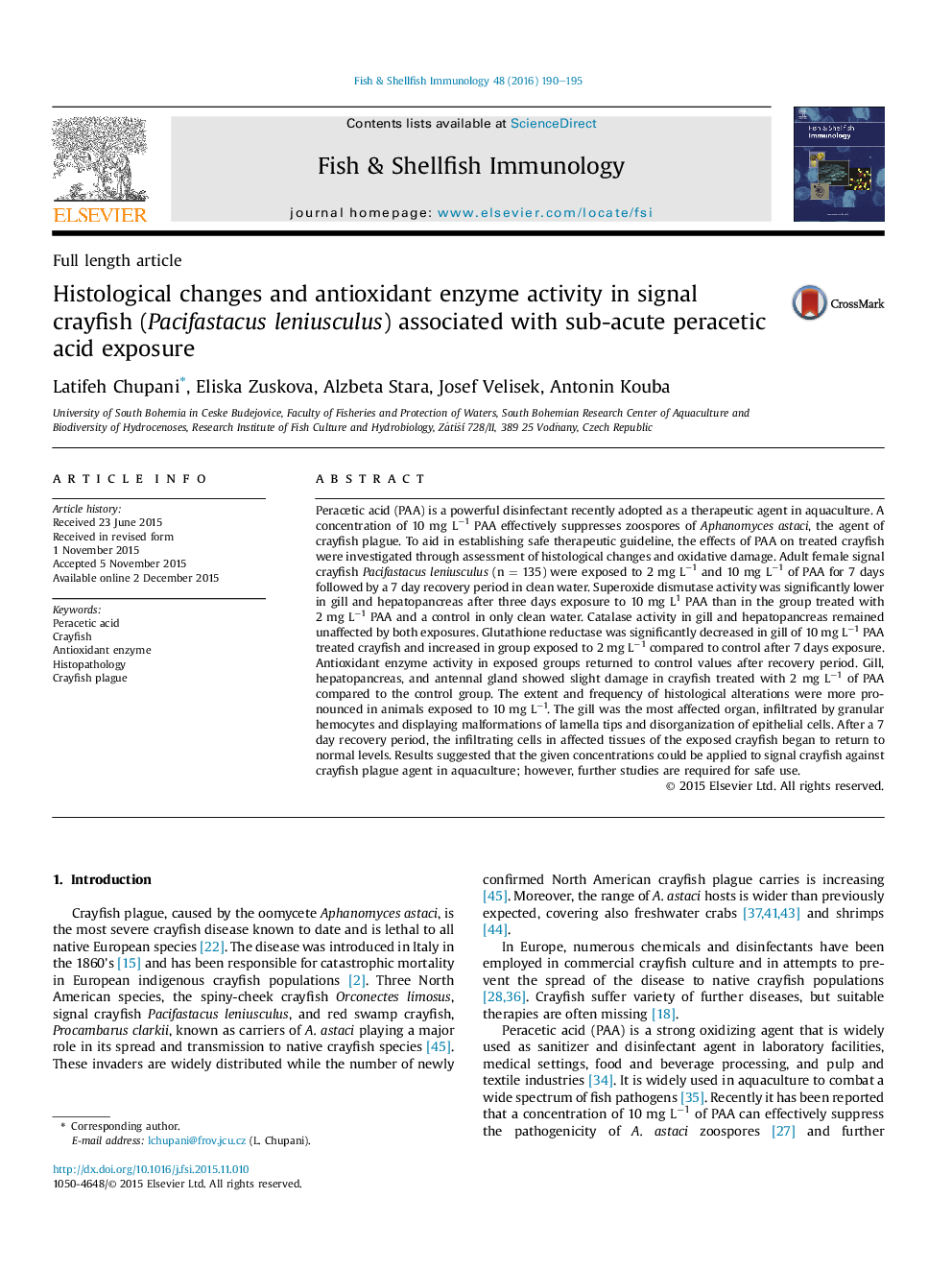| Article ID | Journal | Published Year | Pages | File Type |
|---|---|---|---|---|
| 2430895 | Fish & Shellfish Immunology | 2016 | 6 Pages |
•We assessed the effects of peracetic acid (PAA) on signal crayfish.•We examined histopathological changes and oxidative stress in various tissues.•Ten mg L−1 of PAA could be safely used for crayfish with sufficient recovery time.
Peracetic acid (PAA) is a powerful disinfectant recently adopted as a therapeutic agent in aquaculture. A concentration of 10 mg L−1 PAA effectively suppresses zoospores of Aphanomyces astaci, the agent of crayfish plague. To aid in establishing safe therapeutic guideline, the effects of PAA on treated crayfish were investigated through assessment of histological changes and oxidative damage. Adult female signal crayfish Pacifastacus leniusculus (n = 135) were exposed to 2 mg L−1 and 10 mg L−1 of PAA for 7 days followed by a 7 day recovery period in clean water. Superoxide dismutase activity was significantly lower in gill and hepatopancreas after three days exposure to 10 mg L1 PAA than in the group treated with 2 mg L−1 PAA and a control in only clean water. Catalase activity in gill and hepatopancreas remained unaffected by both exposures. Glutathione reductase was significantly decreased in gill of 10 mg L−1 PAA treated crayfish and increased in group exposed to 2 mg L−1 compared to control after 7 days exposure. Antioxidant enzyme activity in exposed groups returned to control values after recovery period. Gill, hepatopancreas, and antennal gland showed slight damage in crayfish treated with 2 mg L−1 of PAA compared to the control group. The extent and frequency of histological alterations were more pronounced in animals exposed to 10 mg L−1. The gill was the most affected organ, infiltrated by granular hemocytes and displaying malformations of lamella tips and disorganization of epithelial cells. After a 7 day recovery period, the infiltrating cells in affected tissues of the exposed crayfish began to return to normal levels. Results suggested that the given concentrations could be applied to signal crayfish against crayfish plague agent in aquaculture; however, further studies are required for safe use.
